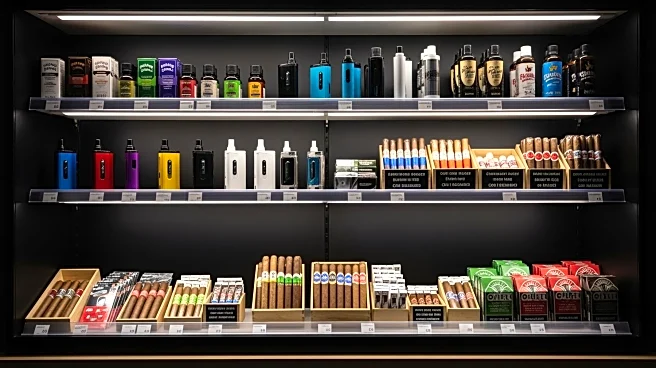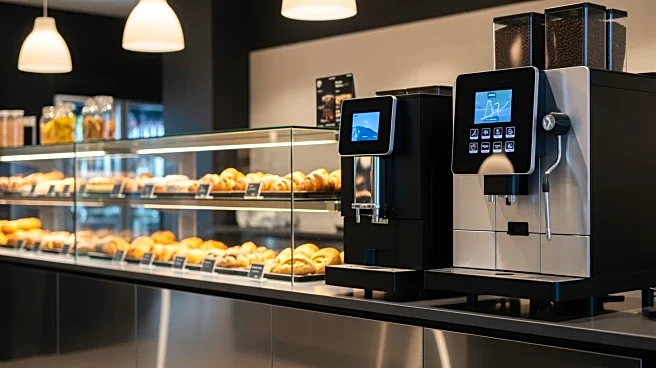What's Happening?
At the NACS Show in Chicago, industry experts discussed the shifting dynamics in tobacco sales within convenience stores. Cigarettes, traditionally the leading in-store merchandise category, are seeing
a decline in their share of sales. Emma Tainter, NACS research manager, presented data indicating that other tobacco products (OTP) have increased their share of in-store sales from 4.2% in 2015 to 7.6% in 2024. OTP includes cigars, smokeless tobacco, nicotine pouches, and heated tobacco products. The profitability gap between cigarettes and OTP is narrowing, with OTP sales averaging $19,663 per store per month in 2024, marking a 7% increase from 2023. Retailers like Weigel's Inc. are strategically positioning themselves to capitalize on this trend by focusing on nicotine pouches, which bypass the threat of illicit vaping products.
Why It's Important?
The shift from cigarettes to other tobacco products in convenience stores reflects broader changes in consumer preferences and regulatory landscapes. As smoking rates decline, non-combustible alternatives are gaining popularity, offering retailers new opportunities for growth. This trend could significantly impact the tobacco industry, prompting manufacturers and retailers to adapt their strategies to meet changing demands. Retailers that successfully navigate this transition stand to benefit from increased sales and customer loyalty, while those that fail to adapt may struggle to maintain their market share. The focus on nicotine pouches also highlights the industry's efforts to address concerns over illicit vaping products, ensuring compliance with regulations and safeguarding consumer trust.
What's Next?
Retailers are expected to continue expanding their offerings of other tobacco products, particularly nicotine pouches, to capture the growing market share. Collaboration with manufacturers and wholesalers will be crucial to ensure a steady supply and competitive pricing. As the profitability of OTP increases, more convenience stores may reallocate resources to support this segment, potentially leading to a decline in cigarette sales. The industry will likely see further innovation in non-combustible tobacco products, driven by consumer demand and regulatory pressures. Retailers will need to stay informed about market trends and consumer preferences to remain competitive.
Beyond the Headlines
The rise of other tobacco products over cigarettes may have broader implications for public health and regulatory policies. As non-combustible products become more prevalent, there could be increased scrutiny from health organizations and policymakers regarding their safety and impact on smoking cessation efforts. Additionally, the shift may influence cultural perceptions of tobacco use, as consumers increasingly opt for alternatives perceived as less harmful. This could lead to changes in marketing strategies and public awareness campaigns aimed at educating consumers about the risks and benefits of different tobacco products.












